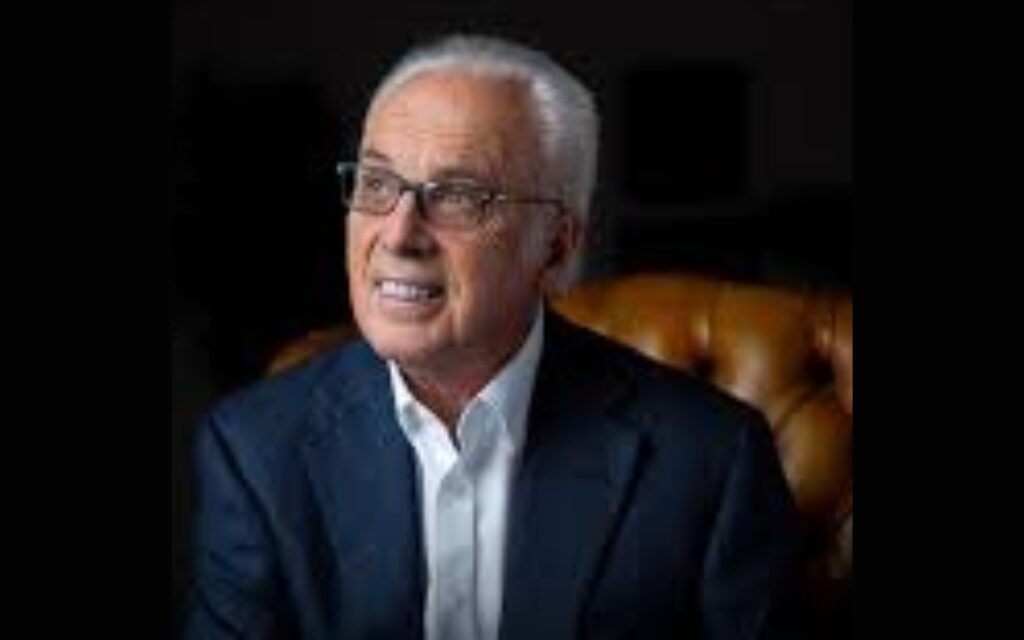This is the fifth and final post in a five-part series titled “25 Influential figures in Church History.”
Christianity wouldn’t be what it is if not for several men who labored faithfully to lay the foundation and build the pillars of the Church. To remember and appreciate their legacy, I have compiled a list of twenty-five men whose works still influence us today. This list is neither exhaustive nor comprehensive, so I encourage you to check out the sources in the footnotes for more information.
Onward we go with the leaders of the great awakening!
The Great Awakening and beyond (1700 – 1900)
Throughout this series, we have traveled through significant eras of Church history and identified some key figures starting with our Lord Jesus. We learned more about the lives of some of the apostles, the Church fathers, the reformers, the puritans, and lastly, we are going to look at the revivalists and a couple of modern history makers.
The revivalists ushered the First Great Awakening or Evangelical Revival, which was a period that was marked by several revivals in Britain and the colonies of America between 1730 and 1740.
20. Jonathan Edwards (1703 – 1758)
Jonathan Edwards was a pastor, theologian, and revivalist of the new world. Many consider him as America’s greatest theologian and philosopher.
Edwards was born in East Windsor, Connecticut, seventy years after the first Puritan settlements in New England. His father was a pastor, and his mother was the daughter of Solomon Stoddard, pastor of the largest church in New England.
When Edwards was thirteen, he attended Yale College and graduated top of his class. He decided to remain at Yale to obtain his Master’s, and a year into his program, a significant event happened. Edwards experienced a “delightful conviction” while meditating on 1 Timothy 1:7.
He said, “As I read the words, there came into my soul, and was as it were diffused through it, a sense of the glory of the Divine Being; a new sense, quite different from anything I ever experienced before.”
After that watershed moment, Edwards began to delight in God’s sovereignty and became highly concerned with the expansion of God’s kingdom. Hence, he interrupted his studies to work at a Presbyterian church in New York. But he stayed there for only eight months before returning to Yale.
In 1726, Edwards was invited to preach at his grandfather’s church in Northampton and got ordained in 1727. That same year, he married Sarah Pierrepont, whom he met during his studies at Yale. His grandfather died two years later, and Edwards assumed the full leadership of the church.
Edwards quickly became concerned about the spiritual state of the congregants. Consequently, he began preaching sermons to bring them to repentance.
His fiery sermons caused a multitude of revivals in his church and the new world that saw hundreds of people come to saving faith. It is said that his sermon, Sinners in the Hands of an Angry God (his most famous sermon and one of the most famous sermons in history), convicted many members of the congregation with holy fear.
Edwards faithfully pastored his grandfather’s church for over twenty years. But his fruitful ministry came to an end when the board of his church discharged him in 1750. He found employment a year later in a small church in Stockbridge, Massachusetts. He then became the president of the College of New Jersey (Princeton University) in February 1758. But hed died from a fever the following month.
Jonathan Edward’s legacy lives on through his multitudes of writings and sermons still available today. Some of his most popular works include The Sermons of Jonathan Edwards, Charity and Its Fruits, The Religious Affections, and Sinners in the Hands of an Angry God.
21. John Wesley (1703 – 1791)
John Wesley was an Anglican evangelist and theologian who co-founded the Methodist movement in the Church of England.
He was born in Epworth, England, and was the fifteenth child of Samuel Wesley, a nonconformist priest and poet, and Susanna Wesley. John’s mother oversaw his education until he went to Charterhouse when he was eleven. Six years later, he attended Oxford University and graduated in 1724. And following his father’s footsteps, he was ordained in 1728.
A year later, he returned to Oxford to fulfill some requirements for his fellowship. During that time, he joined a small student group started by his younger brother Charles. They regularly met to pray, study Scriptures, and take communion. Other students mockingly called them “the Holy Club,” and “the Methodists” due to their method of spiritual disciplines and strict, self-imposed schedules.
In 1735, John left Yale and went on a missionary trip to the American colonies in Savannah, Georgia.
During the trip, a storm came upon them, and John feared for his life. But when he noticed that the Moravian preachers who accompanied them remained perfectly calm, he realized he lacked something.
John’s ministry in Savannah didn’t go well, and he returned to England after only one year. Upon his return, he met Peter Böhler, a Moravian minister, who taught him more about faith. And on May 24, 1738, while listening to a reading from Martin Luther’s preface to Romans, John came to saving faith in Christ.
He said, “while he was describing the change which God works in the heart through faith in Christ, I felt my heart strangely warmed. I felt I did trust in Christ, Christ alone for salvation, and an assurance was given me that he had taken away my sins, even mine, and saved me from the law of sin and death.”
After his conversion at age 35, John wanted to preach the gospel. However, several churches closed their doors to him due to his enthusiastic way of preaching. Consequently, he held outside meetings and went to religious societies to preach, and it led to several revivals within the church in England.
John also partnered with George Whitfield, but they eventually parted ways due to their conflicting doctrinal views (John was Arminian, while Whitefield was a Calvinist).
John remained an Anglican throughout his life and never intended to create a new denomination. But his followers eventually became one, and today there are over thirty million Methodists worldwide.
22. Charles Wesley (1707 – 1788)
Charles Wesley was a poet and hymn-writer who co-founded the Methodist movement with his brother John Wesley. He is hailed as the most excellent hymn writer in Church history and has written 8, 989 hymns.
Charles was the eighteenth child and the youngest son of Samuel and Susanna Wesley. Nine of his siblings died in infancy, and Charles almost didn’t make it due to his premature birth and weak health as an infant. But he prevailed.
Charles’s mother also oversaw his education and taught him Greek, Latin, and French. In 1716, he attended Westminster School in London and studied there for thirteen years. Afterward, he went to Oxford University for nine years and obtained his Master’s degree there.
While at Oxford, Charles and a few of his classmates created a group later dubbed as the “Holy Club,” by other students. Charles’s elder brother John then joined the club, took over the leadership, and helped increase their numbers and activities.
After he graduated from Oxford, Charles became an ordained priest and joined John on a missionary trip to Georgia in 1735. But the mission was marred with so many hardships and setbacks that Charles returned to England the following year.
Upon his return to England, Charles taught Peter Böhler English, and under his influence, Charles self-examined his faith.
In May 1738, he had his conversion moment while reading Martin Luther’s commentary on Galatians. He said, “I now found myself at peace with God, and rejoice in hope of loving Christ.” Two days later, he wrote his first hymn that celebrated his conversion.
Charles then joined his brother in traveling, sharing the gospel, and preaching outside church buildings. He also wrote hymns, and it is said he wrote ten poetic lines a day for fifty years.
In 1749, Charles married Sarah Gwynne and had eight children with her, but only three survived infancy. He continued to be an itinerant preacher until his health stopped him. So he spent the remainder of his life preaching in local Methodist chapels and writing hymns.
Charles Wesley left behind a wealth of theologically rich hymns. Some of his most popular ones are “And Can it Be,” “Christ the Lord Is Risen Today,” “Hark! The Herald Angels Sing,” “Jesus Lover of My Soul,” “Love Divine, All Loves Excelling,” “O for a Thousand Tongues to Sing,” “Rejoice! The Lord is King,” and “Soldiers of Christ, Arise.”
23. George Whitfield (1714-1770)
George Whitefield (pronounced Whitfield) was an Anglican evangelist who helped found Methodism with the Wesley brothers and led the first great awakening with Johnathan Edwards.
Whitefield was born in Gloucester, England, to Thomas and Elizabeth, who were innkeepers. Due to financial difficulties at the inn, Whitefield could not afford tuition at Oxford University. Consequently, he enrolled as a servitor at Pembroke when he was eighteen.
While at Oxford, Whitefield experienced his conversion moment that he called “new birth.” He also joined a religious organization called the “Holy Club” led by the Wesley brothers. Whitefield initially planned to join the Wesleys on their missionary trip to Georgia, but his voyage got delayed. So he got ordained as a deacon in the Church of England and began preaching in a never-before-seen manner.
Whitfield often delivered his sermons like a theatrical performance. He cried, screamed, sung, danced, and jumped around. David Garrick, a famous British actor of the time, once said, “I would give a hundred guineas, if I could say ‘Oh’ like Mr. Whitefield.”
In 1738, he eventually made it to Georgia to do missionary work, but he only stayed there for three months. When he returned to England, many churches closed their doors to him because of his unusual style of preaching. Consequently, he preached in different venues and outdoors. He had a huge success, and large crowds gathered to listen to him. And amongst his admirers was Benjamin Franklin.
In 1739, he toured the new colonies of America to preach, and his sermons also drew large crowds. Jonathan Edwards invited him to preach at his church and reported that, “The congregation was extraordinarily melted.” Whitefield’s ministry sparked a series of revivals throughout the country, and he is considered the father of American revivalism.
Whitefield spent the remainder of his life relentlessly preaching and averaged 1000 sermons per year for thirty years. He preached about 18,000 sermons to about ten million people during his thirty-four years of ministry. He passed away of a sudden death at age 55, and John Wesley preached his funeral sermon.
24. Charles Spurgeon (1834-1892)
Charles Spurgeon, also known as “The Prince of Preachers,” was an English pastor and theologian. He was the best-known preacher of the nineteenth century and one of the most influential preachers ever.
Spurgeon was born in Kelvedon, Essex, and both his father and grandfather were nonconformist ministers. Though he received limited formal education and never earned a university degree, Spurgeon highly valued education and books. He read a lot of them accumulated over 12,000 books by the end of his life.
In 1850, Spurgeon came to faith after listening to a Primitive Methodist preacher. He got baptized four months later and then broke his family tradition by becoming a Baptist. He started preaching while still a teenager, and his mature sermons and oratory skills impressed his hearers. So much that he was invited to preach at The New Park Street Chapel in London, he had tremendous success and became the pastor of that church before he turned twenty.
His sermons were exceptionally well received in the community, and he quickly became known as the “preaching sensation of London.” He was invited to preach all over London, and his event drew so many people that venues could not accommodate them all. Even his home church could not keep up with the large crowds that came to listen to him.
So they built the Metropolitan Tabernacle, which seated about 6,000 to fit his congregation. Spurgeon preached there until his death in 1892.
During his forty years of ministry, he preached 3,500 sermons, to an estimated ten million people. His writings and sermons are still widely popular today. Some of his most famous work includes Treasury of David, Morning and Evening, Spurgeon’s Sermons, and Lectures to My Students.
25. C.S Lewis (1898-1963)
Clive Staple Lewis was an Irish author, apologist, and scholar. He is considered one of the most influential writers and greatest apologist of the twentieth century. He is best known for his classic series, The Chronicles of Narnia.
Lewis was born in Belfast, Ireland, in a protestant family. Lewis’s family highly valued education and reading, so they filled their houses with all kinds of books. As a result, Lewis became an avid reader, which led him to write.
When Lewis was ten, his mother died from cancer. This event gravely wounded him and led him to reject the God of the Bible and embraced atheism. He went to Oxford University in 1917, graduated, and became a faculty member from 1925 50 1954. Afterward, he taught at Cambridge University from 1954 to 1963.
While he was at Oxford, Lewis met Hugo Dyson ad J.R.R Tolkien who were devout Christians. Under their influence and the works of his favorite authors who also happened to be believers, Lewis returned to theism in 1929. Albeit unwillingly.
He said he came to faith “kicking, struggling, resentful, and darting [my] eyes in every direction for a chance of escape.” And he called himself “the most dejected and reluctant convert in all England.”
Lewis eventually warmed up to God, and two years later, he graduated from theism to Christianity and joined the Church of England. Soon after his conversion, Lewis began writing books that reflected his new faith. He published his first significant work, “The Pilgrim’s Regress: An Allegorical Apology for Christianity,” in 1933. He also gave talks and preached sermons over the radio that added to his fame.
In 1952, Lewis met Joy Davidman, a Jewish woman who became a Christian through reading Lewis’s books. They fell in love and got married in 1957. Unfortunately, their happiness was short-lived as Joy died four years later from cancer. Then Lewis died two years later of renal failure.
C.S Lewis remains one of the most influential writers in Church history. His works in apologetics, theology, and art profoundly impacted the lives of many Christians today. Some of his most influential books are Mere Christianity, The Screwtape Letters, The Great Divorce, The Abolition of Man, The Allegory of Love, and The Problem of Pain.
The past enriches our lives in surprising ways. In our past, our family history, we see examples of faithful disciples. We can be encouraged and even inspired by their faithfulness. But far more, we see examples of God’s faithfulness to His people.
Stephen J. Nichols
This concludes the series of 25 Influential Figures in Church History. I chose not to include famous contemporary Christians though they are already leaving their marks in history. Time will show the full impact of their ministry, and another generation will commemorate their legacy.
Learning the stories of these men, and their faithfulness despite their tremendous adversity deeply inspired me. I didn’t expect it would impact me that much. If you followed along, I hope it blessed you too.
Grace and peace to you!
Sources








GOD raised many great people as HIS soldiers, the last one was Billy Graham. When GOD will raise other soldiers for a greater revival?